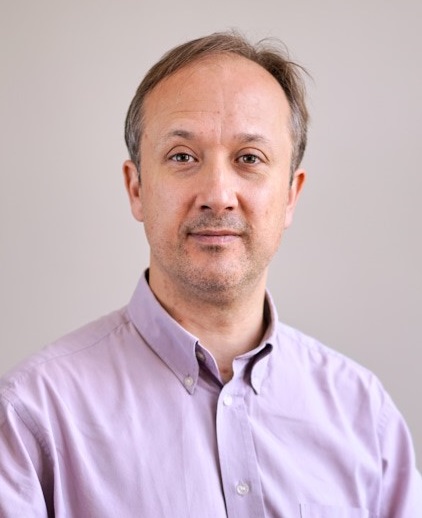
|
|
|
Keynote speakers > Christian SERRE
Metal Organic Frameworks for indoor air quality
Dr. Christian SERRE
Institut des Matériaux Poreux de Paris (IMAP), ESPCI Paris, Ecole Normale Supérieure de Paris, CNRS, PSL University, 75005 Paris, France.
christian.serre@ens.psl.eu; christian.serre@espci.psl.eu

Biosketch:
Christian Serre got his PhD in Chemistry in 1999 from the University of Versailles, France. After a 1st part of his career at the Lavoisier Institute in Versailles dedicated to create the well-known MIL-n MOF materials, he moved to the Ecole Normale Supérieure and ESPCI within the PSL University, to design new functional porous materials and related composites for health, the environment and energy. He is one of the co-founders of SquairTech, a start-up dedicated to indoor air quality. He has been awarded the bronze medal of the CNRS, a grant from the European Research Council, the Berthelot medal and the “Fondé par l'État” prize from the French Academy of Sciences. He is an elected member of the French Academy of Sciences.
Summary:
Indoor air quality requires both the removal of Volatile Organic Compounds (VOCs) or gaseous pollutants (NOx….) as well as an energy efficient control of temperature or humidity. High valence metal(III/IV) based Metal Organic Frameworks (MOFs) have recently been proposed to overcome these challenges.[1] Despite difficulties in controlling their chemistries, we have developed new robust Al, Zr or Fe based MOFs bearing open metal sites and/or hydrophobic moieties can be highly selective for the capture of traces of polar volatile organic compounds in real conditions while being regenerable.[2, 3] One can also tune their structural features and their hydrophilic/hydrophobic balance to get S shaped water sorption isotherms and moderate regeneration temperatures, to address important dehumidification and/or cooling systems’ issues.[4] Finally we reported their easy scale-up under green conditions and ambient pressure, [5] as well as innovative shaping protocols,[6] leading to outstanding performances for the capture of acids in museums, the removal of formaldehyde inside buildings or the room temperature abatement of NOx. [7-9]
[1] D. Chakraborthy, A.Y. Ozturc, G. Mouchaham, F. Nouar, C. Serre; Adv. Funct. Mater., 2023, doi.org/10.1002/adfm.202309089
[2] M. I. Severino et al, Angew. Chem. Int. Ed. 2023, 62(6); (b) M. I. Severino et al, J. Mater. Chem. A, 2023, 11, 4238-4247
[3] (a) N. Sadovnik et al, 2019, PCT/EP19306427.6, 2019; (b) N. Sadovnik et al, Nat. Comm. 2024, in press; 10.26434/chemrxiv-2023-sg37l
[4] (a) Y.-K. Seo et al, Adv. Mater. 2012, 24, 806–810; (b) A. Cadiau et al., Adv. Mater., 2015, 27(32), 4775–4780; (c) T. J. Matemb Ma Ntep et al, Adv. Mater., 2023, 2211302
[5] (a) F. Nouar, M. L. Pinto, C Serre, Faraday Discussions, 2021, 231, 326 – 341; (b) M. Ines Severino et al, 10.26434/chemrxiv-2023-lck31-v2
[6] P. Tignol et al, Small Methods, 2023, doi.org/10.1002/smtd.202301343; (c) C. Freitas et al, ACS Mater. Letters, 2024, 6(1), 174–181
[7] (a) A. Al Mohtar et al, J. Cult. Herit. 2024, 66, 236-243; doi.org/10.1016/j.culher.2023.11.013; (b) P. Tignol et al, J. Cult. Herit. 2024, in press
[8] M. Daturi, V. Blasin-Aube, J. W. Yoon, P. Bazin, A. Vimont, J.-S. Chang, Y. K. Hwang, Y.-K. Seo, S. Jang, H. Chang, S. Wuttke, P. Horcajada, M. Haneda, C. Serre; Adv. Mater. 2024, 2403053, doi.org/10.1002/adma.202403053
[9] D. Won, B. B. Guo, M. Qin, B. Lavédrine et al, 2024, in preparation

